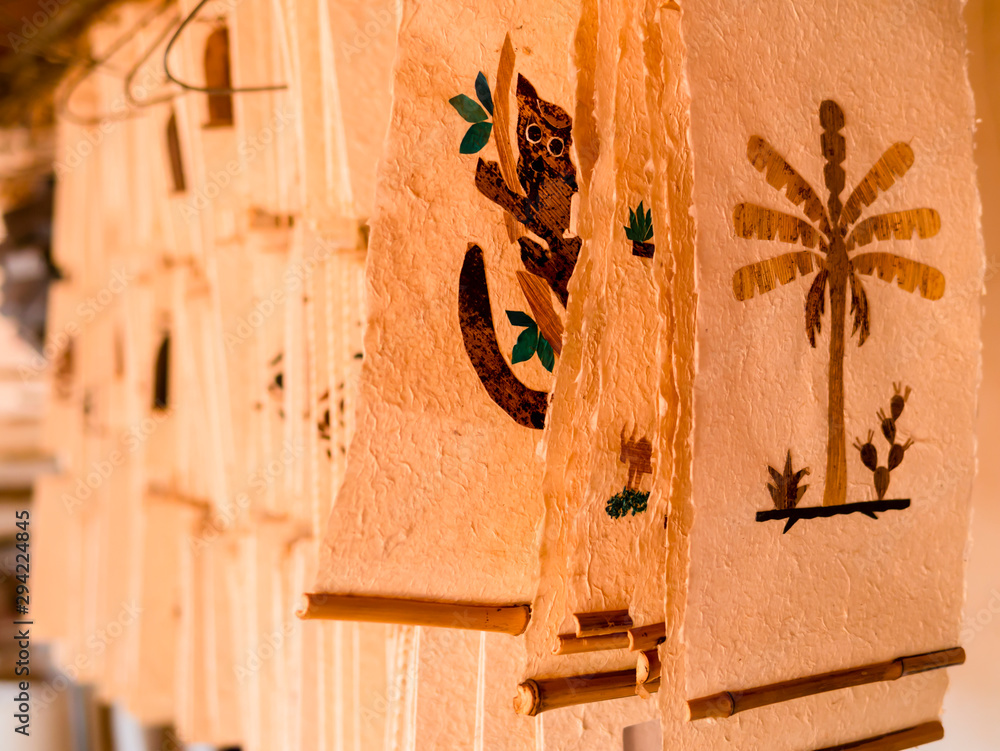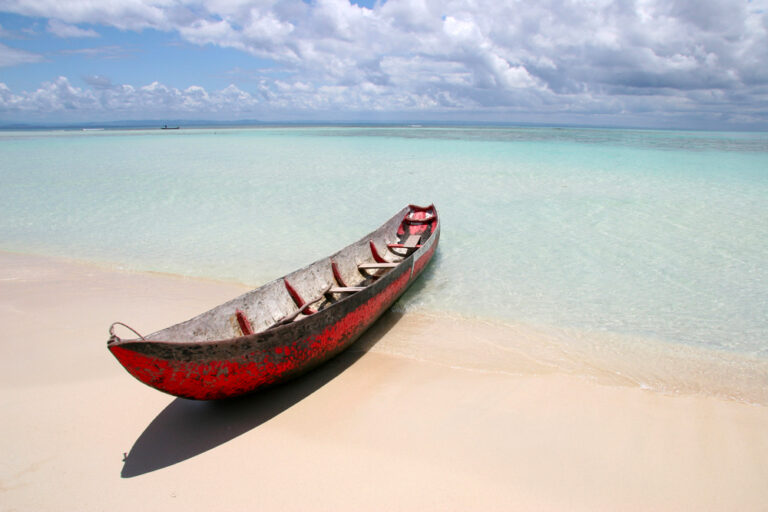The manufacturing of Antemoro paper is a Malagasy artisanal craft that has been introduced several centuries ago in Madagascar, blending cultural traditions with ecological techniques. This type of paper, although often associated with Madagascar, is believed to have originally been developed in Arabia before being introduced to the island by immigrants. According to some sources, this transmission occurred as early as the 7th century, while others suggest an arrival in the 12th century. The most widespread version, however, places its introduction in the 16th century, following the shipwreck of Arab sailors on the southeast coast of the island. These differing accounts reflect the variety of oral and written stories surrounding the origin of this paper.
It was the Antemoro people, living around the town of Manakara, who managed to preserve and pass on this technique through the generations. They transformed it into a sacred art, closely tied to the transcription of Muslim religious texts, a practice reserved for scholars.
It wasn’t until 1936 that the Frenchman Pierre Mathieu rediscovered Antemoro paper and revived its production in Ambalavao, helping to bring this ancient art back to life. The process relies on the flexibility of the fibers of the avoha (Gnidia danguyana), a shrub from the mulberry family. The result is a rustic, thick paper, often decorated with fresh flowers and plants, which, it is said, possesses good-luck properties.
In recent years, the manufacturing process has evolved: increasingly, recycled used paper is being used instead of the shrub bark, in an effort to protect the environment. This brings the tradition into a contemporary ecological approach, while still maintaining its identity.
Manufacturing Process :
The process follows several key stages, as outlined in the table below:
| Step | Description |
| 1. Fiber preparation | The avoha fibers are boiled for 5 to 12 hours, usually with caustic soda, to soften them. |
| 2. Crushing | The softened fibers are then manually crushed until a homogeneous paste is obtained. |
| 3. Pouring and decoration | The paste is diluted in water and then spread onto a sieve. Sometimes, fresh flowers are added for decorative purposes. |
| 4. Drying | The mixture is dried in the sun, after which the sheets of paper are carefully peeled off using a knife. |
A Living Tradition :
Since its revival by Pierre Mathieu, production has diversified significantly. Today, Antemoro paper is used to make postcards, stationery, notebooks, and even high-end packaging. Workshops, such as Fanja’s in Antsirabe and those in Ambalavao, continue to uphold this tradition, sometimes combining it with other artisanal crafts like raffia weaving.
Once a ritual object, Antemoro paper has become a powerful symbol of Malagasy craftsmanship, prized for its authenticity, natural aesthetic, and environmental respect. It embodies the cultural richness of Madagascar and the ability of ancient knowledge to engage with modern challenges.






